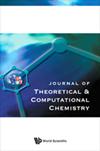KIF1A和KIF5A运动蛋白结构域遗传性痉挛性截瘫突变的计算分析
IF 2.4
Q3 Computer Science
Journal of Theoretical & Computational Chemistry
Pub Date : 2020-09-01
DOI:10.1142/s0219633620410035
引用次数: 2
摘要
遗传性痉挛性截瘫(HSPs)是一种遗传异质性的神经退行性疾病,以进行性下肢痉挛和虚弱为分类。复杂的HSP形式以各种神经学特征为特征,包括进行性痉挛性无力、尿括约肌功能障碍、锥体外体征和智力残疾(ID)。激酶超家族蛋白(KIFs)是参与细胞内运输的微管依赖分子马达。运动蛋白沿神经突定向运输膜囊泡、蛋白复合物和mrna,在神经元发育和功能中发挥重要作用。最近的遗传学研究已经确定了热休克蛋白患者的激酶突变。在这项研究中,我们使用计算方法研究了KIF1A和KIF5A中与HSP和ID相关的40个错义突变。我们通过同源建模构建了激酶-微管结合域和激酶-微管蛋白复合物的结构。我们应用基于结构的能量计算方法来确定错义突变对蛋白质稳定性和蛋白质-蛋白质相互作用的影响。结果表明,大多数致病突变可改变运动蛋白运动结构域的折叠自由能和运动蛋白-微管蛋白复合物的结合自由能。我们发现与KIF1A中ID相关的E253K降低了运动蛋白结构域的蛋白质稳定性。我们发现位于激酶-微管蛋白复合物界面的HSP突变,如KIF5A中的K253N和R280C,可以破坏激酶-微管蛋白复合物的稳定性。计算分析为理解驱动蛋白突变在ID和热休克蛋白发展中的作用提供了有用的信息。本文章由计算机程序翻译,如有差异,请以英文原文为准。
Computational analysis of hereditary spastic paraplegia mutations in the kinesin motor domains of KIF1A and KIF5A
Hereditary spastic paraplegias (HSPs) are a genetically heterogeneous collection of neurodegenerative disorders categorized by progressive lower-limb spasticity and frailty. The complex HSP forms are characterized by various neurological features including progressive spastic weakness, urinary sphincter dysfunction, extra pyramidal signs and intellectual disability (ID). The kinesin superfamily proteins (KIFs) are microtubule-dependent molecular motors involved in intracellular transport. Kinesins directionally transport membrane vesicles, protein complexes, and mRNAs along neurites, thus playing important roles in neuronal development and function. Recent genetic studies have identified kinesin mutations in patients with HSPs. In this study, we used the computational approaches to investigate the 40 missense mutations associated with HSP and ID in KIF1A and KIF5A. We performed homology modeling to construct the structures of kinesin–microtubule binding domain and kinesin–tubulin complex. We applied structure-based energy calculation methods to determine the effects of missense mutations on protein stability and protein–protein interaction. The results revealed that the most of disease-causing mutations could change the folding free energy of kinesin motor domain and the binding free energy of kinesin–tubulin complex. We found that E253K associated with ID in KIF1A decrease the protein stability of kinesin motor domains. We showed that the HSP mutations located in kinesin–tubulin complex interface, such as K253N and R280C in KIF5A, can destabilize the kinesin–tubulin complex. The computational analysis provides useful information for understanding the roles of kinesin mutations in the development of ID and HSPs.
求助全文
通过发布文献求助,成功后即可免费获取论文全文。
去求助
来源期刊
CiteScore
1.70
自引率
0.00%
发文量
0
审稿时长
3 months
期刊介绍:
The Journal of Theoretical and Computational Chemistry (JTCC) is an international interdisciplinary journal aimed at providing comprehensive coverage on the latest developments and applications of research in the ever-expanding field of theoretical and computational chemistry.
JTCC publishes regular articles and reviews on new methodology, software, web server and database developments. The applications of existing theoretical and computational methods which produce significant new insights into important problems are also welcomed. Papers reporting joint computational and experimental investigations are encouraged. The journal will not consider manuscripts reporting straightforward calculations of the properties of molecules with existing software packages without addressing a significant scientific problem.
Areas covered by the journal include molecular dynamics, computer-aided molecular design, modeling effects of mutation on stability and dynamics of macromolecules, quantum mechanics, statistical mechanics and other related topics.

 求助内容:
求助内容: 应助结果提醒方式:
应助结果提醒方式:


